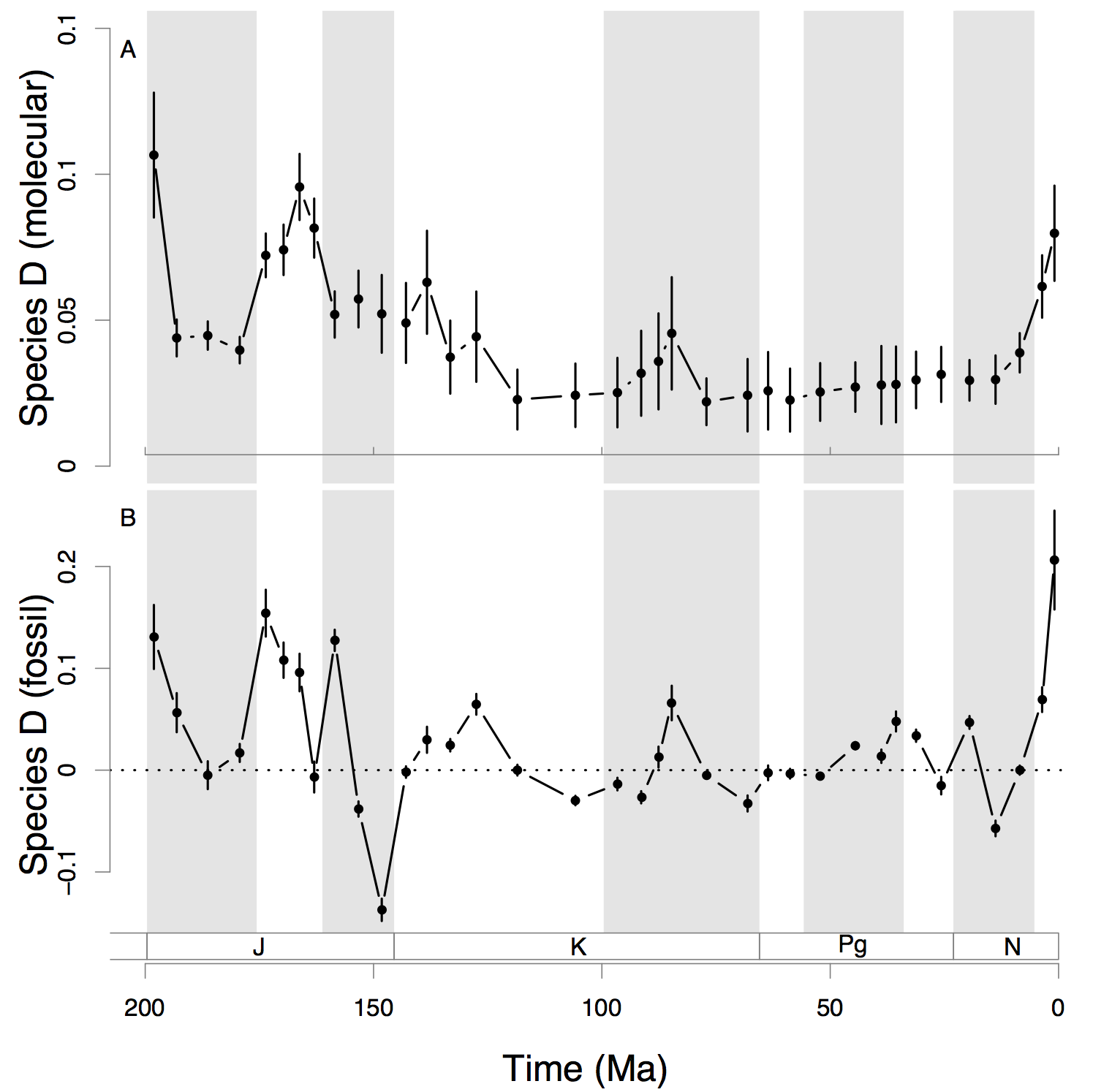Evolutionary diversification of reef corals--a comparison of the molecular and fossil records
Simpson, C., Kiessling, W., Mewis, H., Baron-Szabo, R. C. & Müller, J. 2011. Evolutionary diversification of reef corals: a comparison of the molecular and fossil records. Evolution. 65(11) 3274–3284. DOI: 10.1111/j.1558-5646.2011.01365.x pdf
Understanding historical patterns of diversity dynamics is of paramount importance for many evolutionary questions. The fossil record has long been the only source of information on patterns of diversification, but the molecular record, derived from time-calibrated phylogenies, is becoming an important additional resource. Both fossil and molecular approaches have shortcomings and biases. These have been well studied for fossil data but much less so for molecular data and empirical comparisons between approaches are lacking. Here, we compare the patterns of diversification derived from fossil and molecular data in scleractinian reef coral species. We also assess the robustness of molecular diversification rates to poor taxon sampling. We find that the temporal pattern of molecular diversification rates is robust to incomplete sampling when rates are calculated per interval. The major obstacle of molecular methods is that rate estimates are distorted because diversification rates can never be negative, whereas the fossil record suffers from incomplete preservation and inconsistent taxonomy. Nevertheless, the molecular pattern of diversification is comparable to the pattern we observe in the fossil record, with the timing of major diversification pulses coinciding in each dataset. For example, both agree that the end-Triassic coral extinction was a catastrophic bottleneck in scleractinian evolution.

